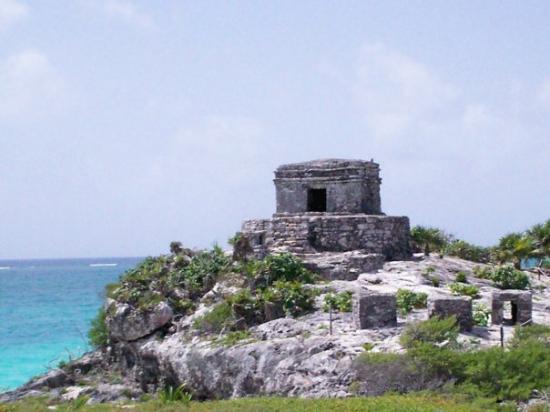TULUM, Q. Roo — The archaeological site of Tulum, one of the most visited in the country, with 1.5 million visits per year, will have a mobile augmented reality application by mid-2017 that will allow visitors to know the conservation work and restoration that are carried out in the area.

The app will be available for the four main constructions of the site. (Photo: AGODA)
Compatible with iOS and Android systems, the “app” will offer audiovisual content, photographs and 3D models of the four main buildings in the archaeological zone, available in Spanish and English, material that once downloaded will not require internet connection.
María Eugenia Rivera and Alma Itzel Méndez, participants of this initiative, together with the restorer Patricia Meehan, explained that the information is in the programming phase.
This is done with the intention of being concise and subtitled, in order to make it accessible to people with visual or auditory weakness.
In statements issued by the National Institute of Anthropology and History (INAH), the “app” will perform the detection from the architecture itself, instead of using QR codes or installing signage on the site.
The augmented reality app will be available for the four main constructions of the Tulum ceremonial core: The Castle, Temple of the Descending God, Temple of Paintings, and the so-called Halach Uinic House.
“They chose these buildings because they are the ones Patricia Meehan and her team have restored; inside them, there are mural paintings that visitors cannot see during their journey, hence the augmented reality is a simple way to provide the public with privileged information and bring them closer to the preservation of heritage,” said Maria Eugenia Rivera.
Patricia Meehan recalled that the unique characteristics of Tulum, such as its climate and proximity to the sea, are those that affect the archaeological zone due to the natural action of humidity, salinity, exposure to the sun and even the activity of iguanas and other Endemic fauna.
This led to the creation of a path to visit the site and the prohibition to access certain monuments, so many people leave without knowing that there are mural paintings or seeing the conservation work.
Therefore, Alma Itzel Méndez stated, “now each building will have a three-dimensional model that will show its original appearance or its construction stages, as well as data on architecture, mural painting, masks or reliefs. All based on the investigations of multidisciplinary teams.”
Once the application is launched, the work will continue with the updating of content and accessibility in other languages, and is expected to be a reference for other researchers who wish to apply this technology to other archaeological contexts.
Source: http://sipse.com/



Comments are closed.